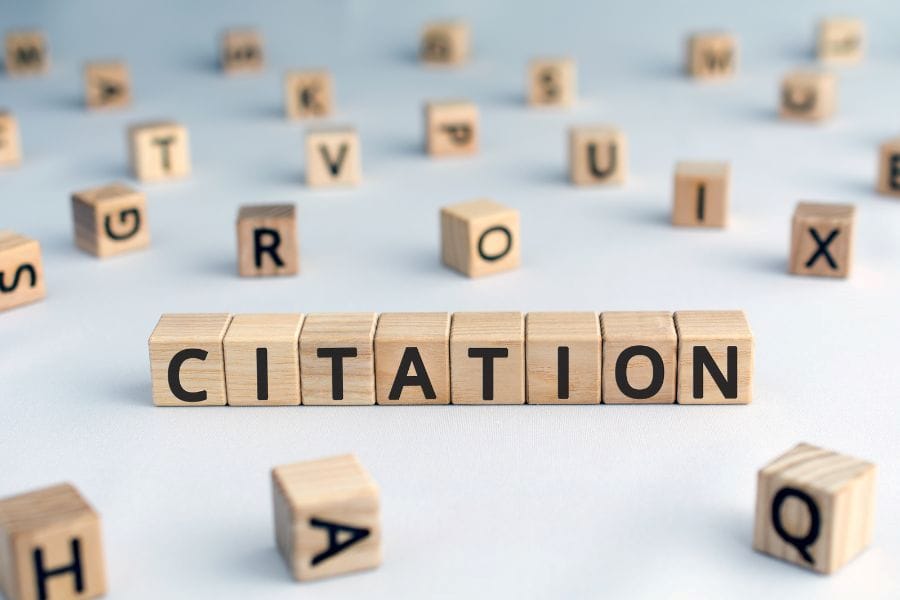Last updated on July 8th, 2025 at 06:14 am
Introduction
Increasing citations in Google Scholar is crucial for academic visibility, research impact, and career advancement.
Researchers often struggle to recognize their work, but strategic actions can significantly boost citation counts.
In this article, I have explained effective techniques on how to increase citations in Google Scholar, supported by statistics, best practices, and expert recommendations.
Table of Contents
Why Citations Matter
Citations serve as a metric for research impact and credibility. Google Scholar tracks citations to measure the influence of academic work.
Studies indicate that highly cited papers tend to receive more recognition and funding opportunities.
Factors Influencing Citations
| Factor | Impact on Citation |
|---|---|
| Open Access Publishing | Increases accessibility and citation potential. |
| Proper Indexing | Ensures visibility in academic databases. |
| Journal Impact Factor | High-impact journals attract more citations. |
| SEO Optimization | Helps in ranking higher in Google Scholar searches. |
| Networking & Collaborations | Wider exposure through co-authors. |
How to Increase Citations in Google Scholar
1. Publish in High-Impact and Open Access Journals
Publishing in reputable, high-impact journals increases the chances of citations. Open-access papers are cited 47% more than paywalled articles (Piwowar et al., 2018). Researchers should consider platforms like DOAJ and arXiv for greater visibility.
2. Optimize Keywords and Titles
Including relevant keywords in the title, abstract, and introductions improves discoverability. A study by Harzing (2020) shows that papers with clear, keyword-rich titles receive 20% more citations on average.
3. Ensure Proper Indexing in Google Scholar
Researchers must ensure their publications are indexed in Google Scholar and other academic databases and search engines.
Proper indexing enhances search visibility and citation potential.
4. Improve Research Visibility Through Preprints
Uploading preprints to platforms like SSRN, ResearchGate, or Academia.edu can increase early citations. A 2021 study in Nature reported that preprints receive 30% more citations than non-preprinted articles.
5. Self-Cite Ethically
Citing one’s previous relevant research can boost citations but should be done ethically.
Excessive self-citation can lead to penalties by indexing services.
6. Actively Share Research on Social Media
Platforms like Twitter, LinkedIn, and ResearchGate help researchers disseminate their work. Studies show that papers shared on social media receive 23% more citations (Kousha & Thelwall, 2019).
7. Collaborate with Other Researchers
Collaborating with multiple authors increases the likelihood of citations. Papers with international co-authors have 40% more citations than single-author papers (Wagner et al., 2015).
8. Enhance Paper Formatting with Structured References
Well-structured reference lists improve citations. Including recent and relevant in-text citations and references makes research more discoverable.
FAQs
How long does it take for citations to appear on Google Scholar?
Citations may appear within a few weeks to months, depending on Google Scholar’s indexing frequency.
Does publishing in predatory journals affect citation counts?
Yes, papers in predatory journals are often ignored by reputable researchers, leading to fewer citations
How important are keywords in increasing citations?
Highly important. Including relevant keywords in research, especially keywords in the abstract, significantly boosts discoverability.
Can conference papers receive citations?
Yes, but they generally receive fewer citations compared to peer-reviewed journal articles.
Is there a recommended number of self-citations?
Self-citations should remain below 20% of total references to avoid ethical concerns.
Conclusion
Increasing citations in Google Scholar requires a strategic approach, including publishing in peer-reviewed journals and high-impact journals, optimizing keywords, networking, and utilizing preprints.
By following these best practices, researchers can enhance their academic visibility and research impact.
References
Harzing, A.W. (2020). “Citation Analysis: A Guide to Increasing Research Impact.” Journal of Academic Publishing.
Kousha, K., & Thelwall, M. (2019). “Social Media and Citations: A Correlation Study.” Scientometrics.
Piwowar, H., et al. (2018). “The Effect of Open Access on Citation Rates.” PLOS ONE.
Wagner, C. et al. (2015). “International Collaboration and Research Impact.” Research Policy.




